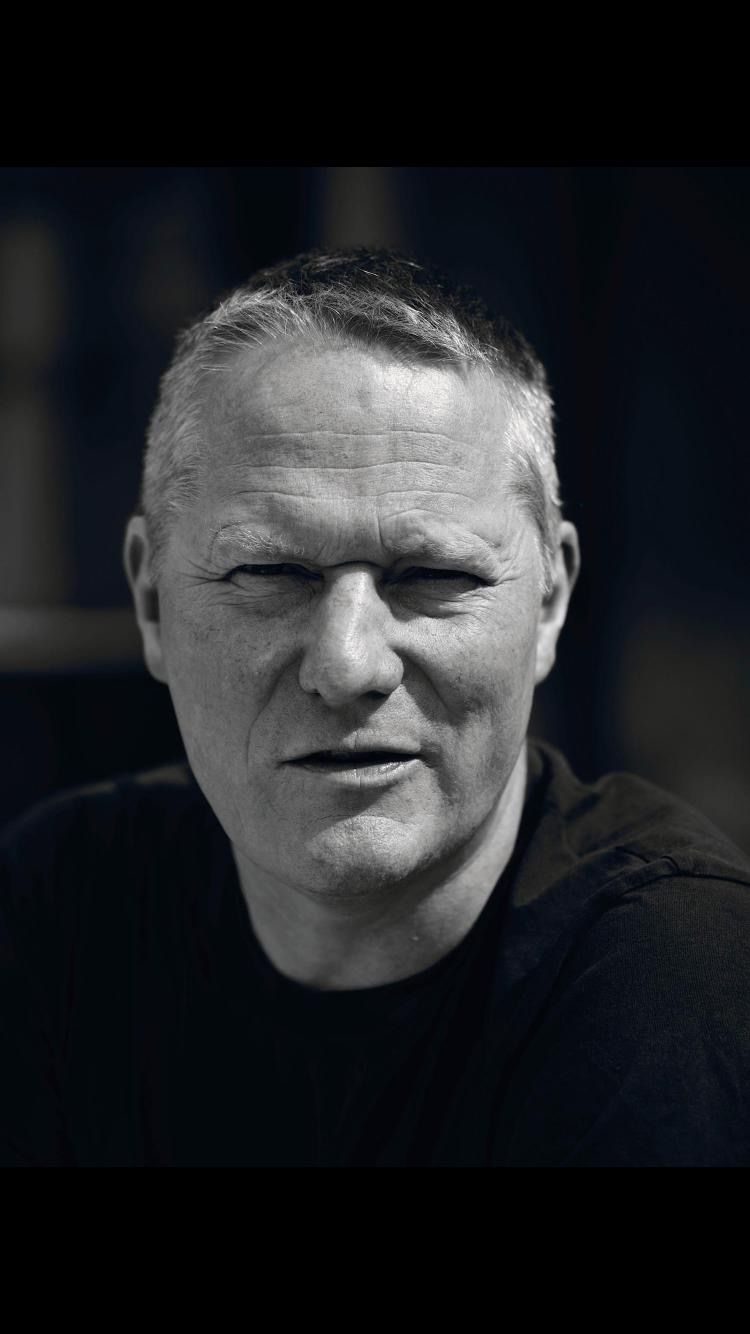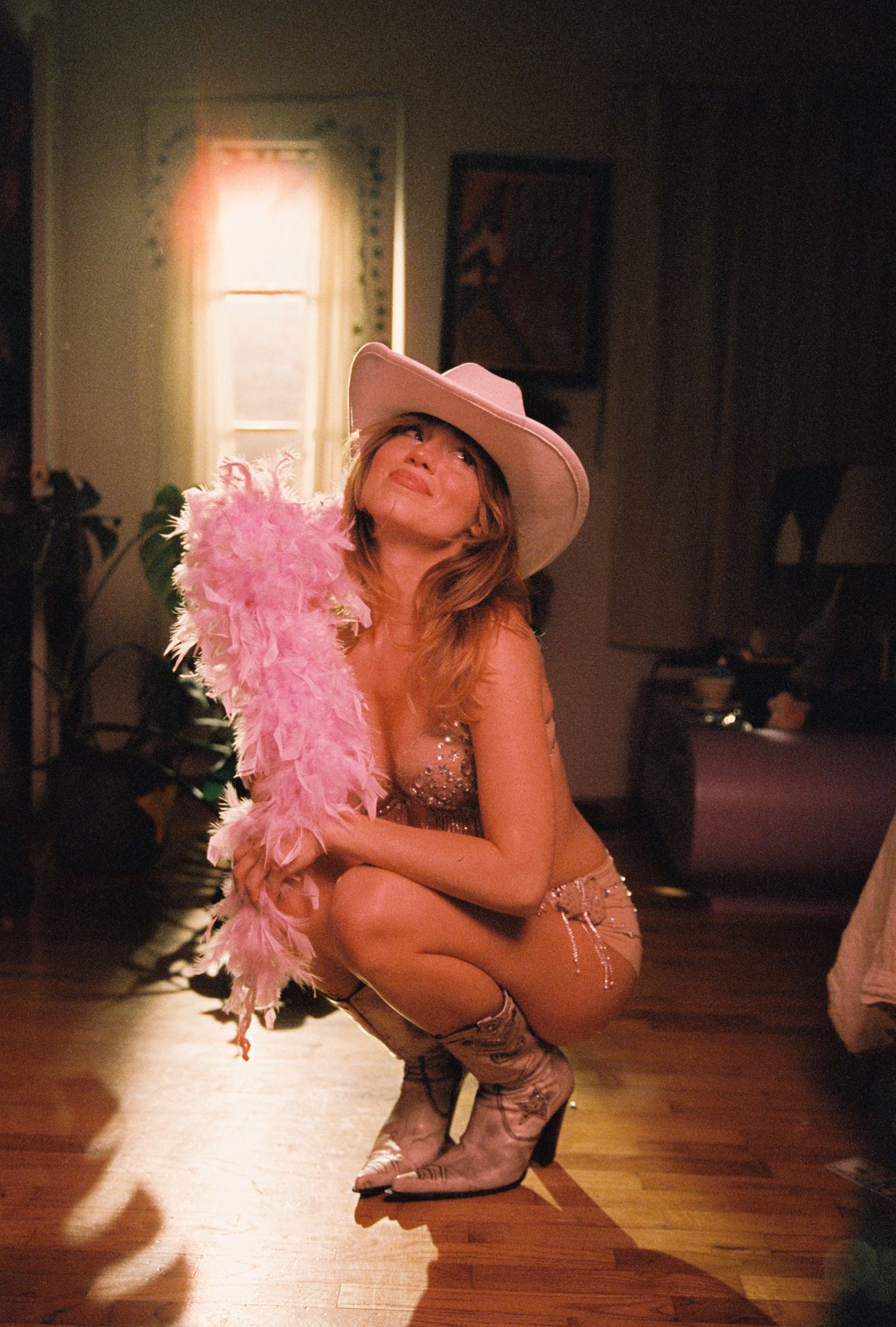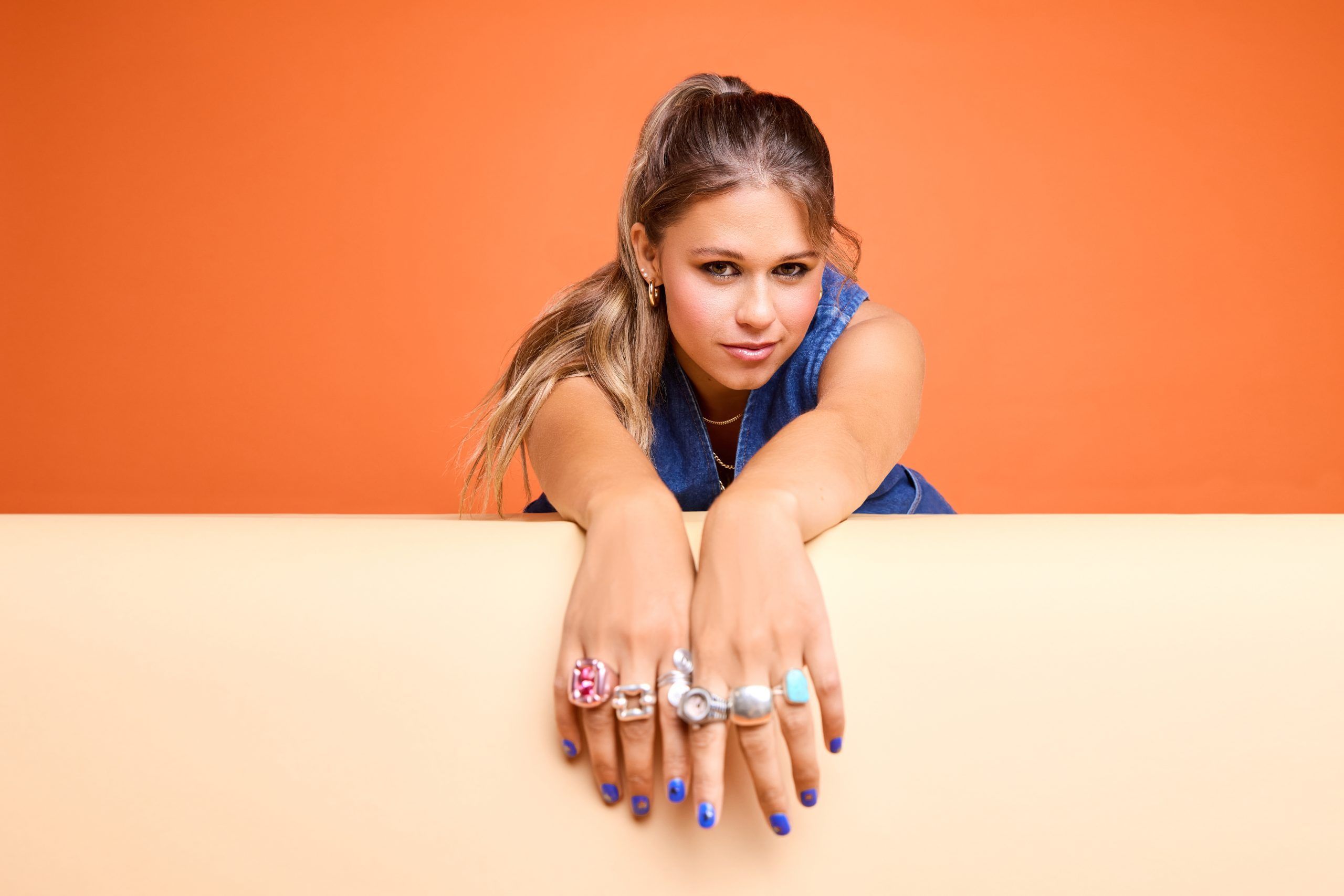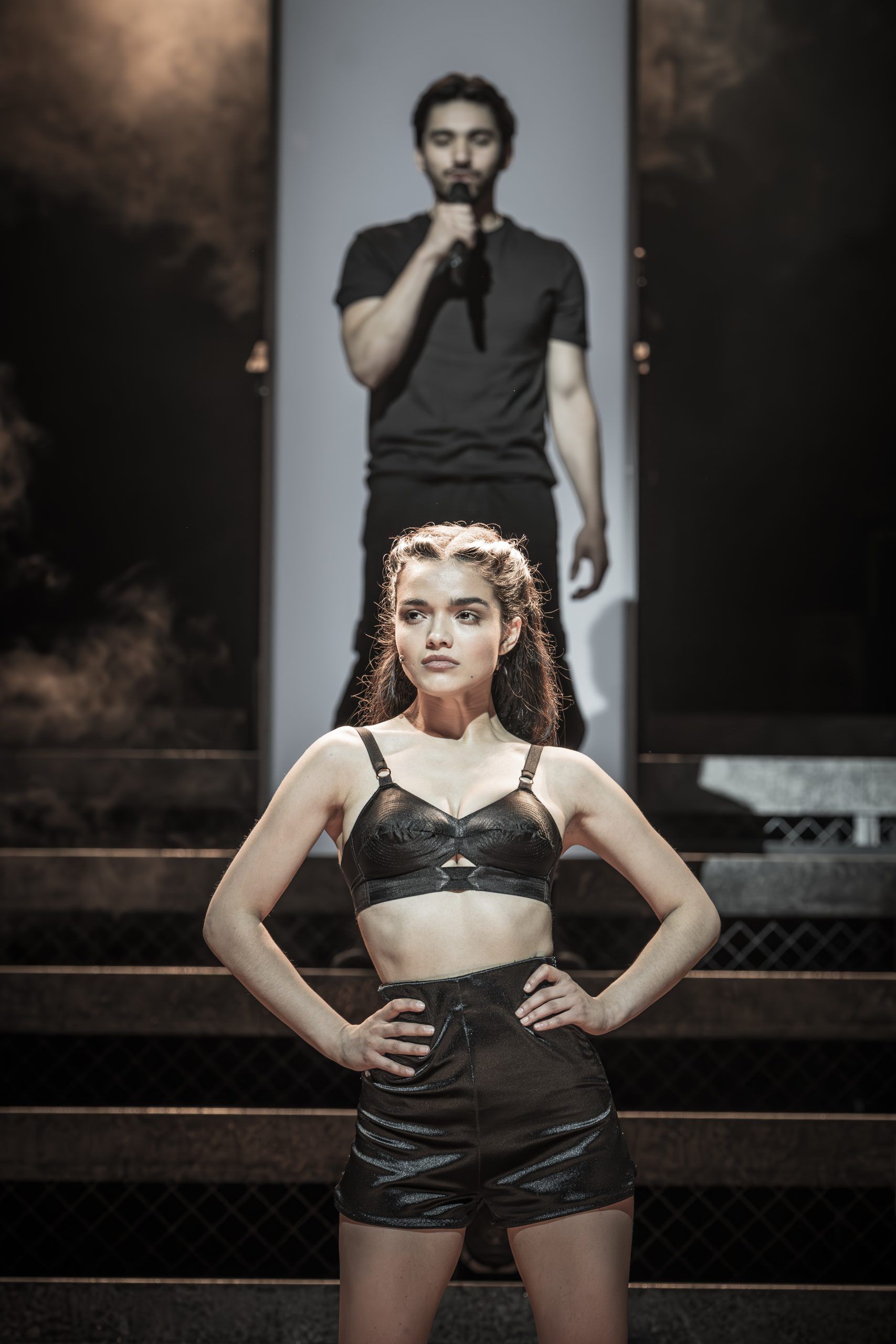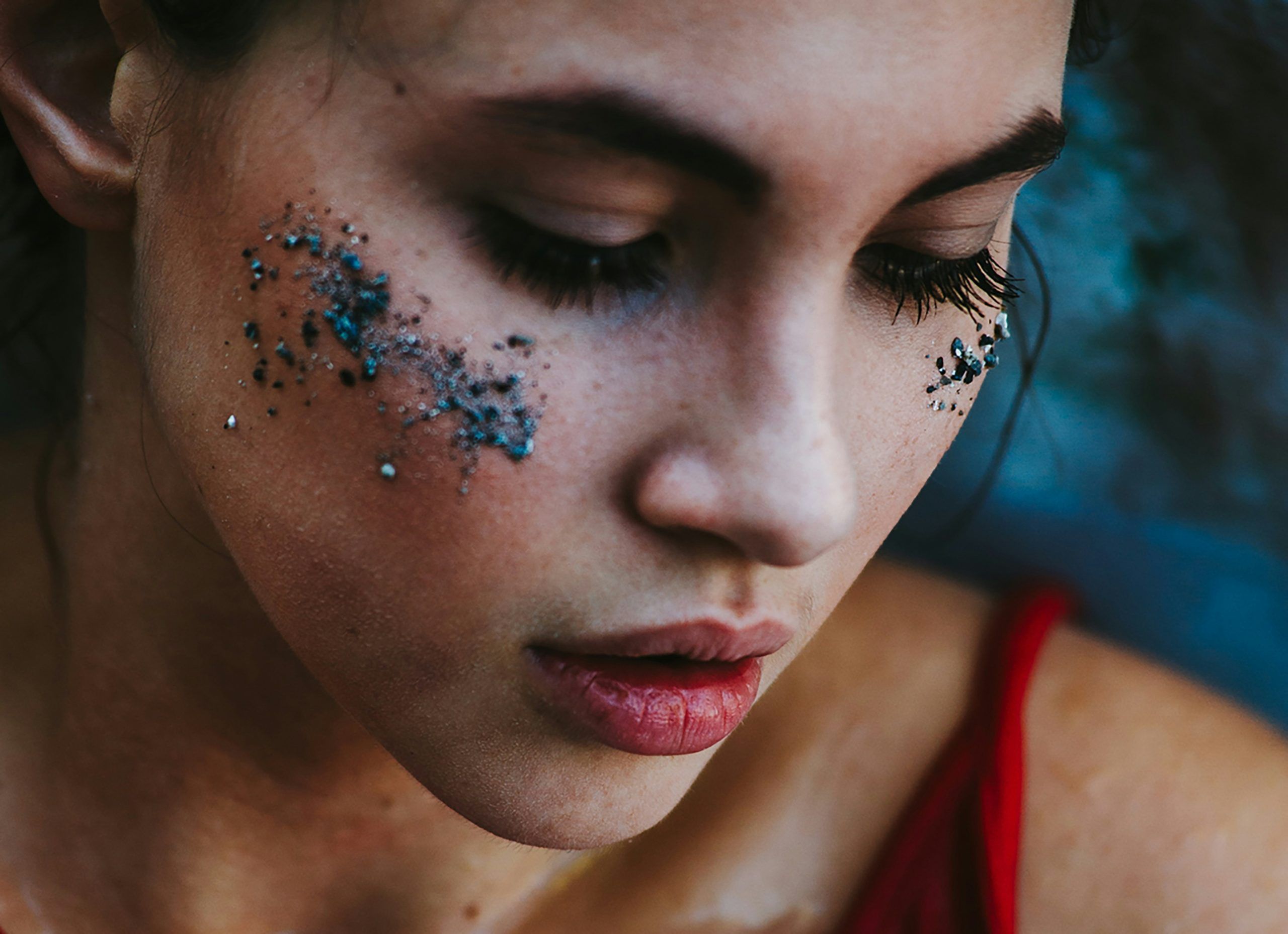Bass prodigy Blu DeTiger, is a genre-bending artist who’s smashed any limits regarding what women in music or her chosen instrument are capable of.
After picking up a bass at seven years old, the Forbes 30 Under 30 alum has been on a creative evolution, and we’re joining her for the ride – from supporting Sabrina Carpenter on tour to playing bass for Bleachers, and Dominic Fike.
A successful string of single releases heralded the arrival of her highly-anticipated debut album, All I Ever Want Is Everything, whichwaslaunched in March. Garnering a cult following on TikTok, she’s already created a community of over 1.4 million followers and inspired the next generation of aspiring bassists.
Now, she’s releasing a signature bass with the legendary music brand, Fender. Designed by DeTiger, the Limited-Edition Blu DeTiger x Player Plus Jazz Bass® perfectly fits her aesthetic. It could of course only be blue, in a shade she has dubbed sky burst sparkle.
1883 Magazine chats to Blu DeTiger about the behind-the-scenes crafting of the Fender signature bass, the importance of education and visibility in the music industry, and how DJing has influenced her artistry.

You helped launch the Fender Player Plus Jazz Bass in 2021. Now, you’ve got your own signature bass. You’re the youngest and first female to have this. How did it feel to have this happen?
It feels so crazy. Just so insane. We’ve been working on it for close to three years. I’ve just been low-key freaking out about it to myself. Now, I can publicly freak out about it, which is fun. It obviously feels incredible. As a player, it always feels like the ultimate goal to work towards is getting your own signature line. It feels like just a major accomplishment that has happened at this time in my life.
After first picking up the bass when you were seven, what guitar did you learn on?
My first bass ever was a short scale Gretch. After that, I got a Mustang, and I got a P-Bass. Then I went through a bunch of different stuff and had a Rickenbacker for a while. Then I started learning funk and slap bass. Then I was like, “Okay, I need, like a jazz bass.” I found the jazz bass and was like, “Okay, this is the sound that I love and that can best accomplish what I’m trying to do.” So jazz bass is where I landed.
You must have a lot of different influences. You’re originally from New York and went on holiday to Ibiza while growing up. How did you find merging all of these different sounds into one that was unique to you?
I think that almost just happens subconsciously. You grow up. You find players that you like. Try to emulate them and learn from them, but at the end of the day, everyone’s playing is so individualised. No one has your same fingers and your same touch on the instrument. It just happens from years of playing. Years of trying to emulate other people and then putting that through your own lens. That creates your own sound. That’s how I feel about playing-wise. Music-wise, when I’m writing and stuff, it’s just always going to be there because it’s just ingrained, like in your DNA. All of that stuff that I grew up listening to, that’s my reference point.

While growing up did you have any particular mentors or any female musicians that you looked up to?
I had a bunch of mentors, like Jerry Barnes who is the bassist with Nile Rogers. Warren McCray is another mentor. He taught me how to slap. It was really cute because he came to my last show in New York. We had a whole moment. It was awesome. Not many female mentors, which is part of the reason why I wanted to become that for other people too. I didn’t really see that growing up and I didn’t really have that. It was really hard to find in person. I would watch videos, like Tina Weymouth.
It’s definitely an industry-wide problem. What would your advice be for changing this?
I think education is important. Educating people about the instrument. Just being out there and just showing that it’s possible, The more you see it, the more it becomes normalised, I think that’s been changing the past few years. I’ve seen more and more women in the space popping up, versus when I was growing up. I think that’s part of social media and it just being way easier to access. You can type in like, “Dope female bass player.” A bunch of stuff will come up. I think it’s slowly getting better and changing.
It’s amazing, especially how you’ve grown on TikTok and inspired other people to pick up a bass.
Exactly. I think that’s what I really liked about it. During the pandemic, stuff was really connecting with people and showing what the bass could do. I was just so surprised that people didn’t really know about the instrument. They didn’t know what slap bass was or different techniques. I think the education and like inspiration part of it is really important to me.
You recently covered Charli XCX’s “Guess”, and showed how the instrument can be used in that way, which was really cool.
Totally, because people haven’t heard that. They don’t know until they hear it. I’m just trying to use the bass in different unique ways. Hopefully, inspire people to do the same.
I find your musical technique really interesting because you also treat your voice like an instrument. How did that kind of approach happen, or did you always treat it that way?
I always treated it that way since bass was my first instrument. That’s just naturally how I hear and feel music. That’s the first thing I listen to when I hear songs, like the bass part or the groove. When it comes to writing, I try to make the bass sing almost like another vocal. It’s the main expression for me. I treat my voice in the same way as another instrument.
You’ve supported Sabrina Carpenter on tour, as well as played bass for Bleachers, and Dominic Fike. How has it been learning from each experience and picking things up along the way?
I’m so grateful I got touring experience with other people. You learn a lot about how the whole touring operation works, like “What makes a good Front of House Engineer, what makes a good Tour Manager, and what makes a good leader?” I think that was really important. It was cool that I got to see that from the side of being in the band. I could take what I learned from those artists, and when I started doing my own thing, I was able to treat people the way that I would want to be treated in the band. You just relate to the band and crew when you’ve been in that space. Everyone’s just talented, cool, and nice. It’s really fun to just play all different styles of music and all different types of shows. It’s been dope.
I feel like there’s like a really nice element of collaboration on your incredible latest album too. You’ve worked with the likes of Chappell Roan and your brother, Rex DeTiger. How have your collaborators shaped your work?
Any time you collaborate with people, they’re gonna have their natural influence on it. I think what’s cool about the people that I like to work with, they’re there to support my vision. Not there to change it or try to alter it in any way. I’ve been in situations like that as well. It’s just not the vibe. That’s why a lot of the collaborators on my album are my friends or my brother, just like Chappell. People who really get it, understand it, and can come in there to help bring my vision to life.

How has your vision changed since you started music?
I’m just learning as I go as well. You do what feels right at the time. As you grow and experience more of life, that’s naturally going to change the music and what you’re saying in your music. How you relate to the world and other people. I think it’s just ever-evolving. I’m working on new music right now. It’s really fun because I got the other stuff off my chest. Now I feel like I can move on to the rest of the stuff. I had to get that out to be able to do what I’m doing now.
What can you tell us about anything new that you’re working on?
Super funky. Signature basses all over it. It sounds really cool. I’m just going back to a lot of my early influences with funk and disco. Very New York-esque, But like early 80’s New York. That’s kind of the vibe I’m in right now. I’m making it in New York. The last album that I made was in LA. I’m just feeling really inspired by this city right now.
Whenever you’re in LA, what do you miss the most about New York?
I think it’s just the energy of the city and the hustle. I’m just used to doing a million things in a day and biking around. Taking the subway and walking. In LA, it’s just not like that. It’s just a different type of place. It’s driving and it’s all spread out. I’m used to the hustle and bustle of just being more within city vibes and people at all times. I prefer that just because that’s what I grew up in. I like fast-paced. That’s what I usually miss about it.
You’ve played CBGBs, which is an iconic punk venue. What’s your favourite venue in New York?
That one’s definitely the dopest. I mean, MSG [Madison Square Garden]. That’s the most iconic dream venue. I got to play at MSG, earlier this year. I was opening. Now, I’ve got to headline. That’s my next thing.
What’s your next goal?
I guess I’m always thinking about it. Just more music, more touring and bigger shows. I’m just really excited about the new music that I’m making. I’m really excited for this bass to be out in the world. The bass was the big thing. Now that it’s here, I’m doing all the promo and stuff. I’m really looking forward to going to Guitar Center and seeing it. That’s what I’m thinking about these days. It’s just that little stuff and trying to enjoy the moment of having a signature bass out. That’s kind of my vibes right now.

With the bass, what was the most important thing that you wanted to get right, and how did you settle on the shade of blue?
The blue came from this custom shop I had made before I started working on the signature. We got this really cool shade through that. Me and this master builder, we just would go back and forth sending photos and stuff. When I started working on the signature, the custom shop was the prototype. The very first model that we were going to base the signature on. We took that colourway and edited it a little bit. I sat down with the Fender team at the office. They had like 20 different swatches of different colours. There are different sizes of sparkle flakes, it’s really interesting. I’m going through them. I’m like, “Oh, that’s too much sparkle. That’s too little. The flakes are the wrong colour.” There’s all these intricacies. It was just a lot of trial and error. Looking at all the swatches and everything. The colour was really important.
I don’t know if it’s hard to get right, but the main point I was really trying to get across was making a bass that was really good for the studio and for a tour. Oftentimes, I find myself using different ones. I just wanted to make one that had everything. Figuring out how to make a bass that was super lightweight, that was good on your body, that was still not losing any punch, low end or mid-range. That was the big thing that we did with this bass. We made sure that it was all fully balanced. All the frequency ranges were coming through. Having this extra really cool humbucker pickup at the bridge. Just getting all the electronics, pickups and weight right. It was a lot of back and forth.
What did you find the most surprising through this experience?
I think I knew it was going to take a long time, but it really took a long time. I’m very perfectionist. For example, when I get someone’s mix, I’ll just keep going at it. In my head, I thought I was going to take almost way longer for this bass. We did two versions and the second version was the one. I’m actually kind of surprised that I was just like, “This is it!” Because there are so many little things. I think it was also because I had the custom shop that was the early one. I guess it’s technically three. Usually, I’m like, “Let’s change this.” I’m actually kind of surprised within myself that I was able to just let it go because it’s a big deal.
Do you have a name for your instruments or your personal signature bass?
I don’t really but I honestly should. Now they all look the same, so it’s kind of hard. I have a bunch now. I have a signature that’s at my spot in LA and one in New York. I like people who name their instruments. I just never got around to it.
It must be common to have people asking if your own name is real?
Oh my God, all the time. I think I got asked that last night. I get asked that all the time. Just because it seems made up. Because it’s so unique and weird. But yes, my real name is Blu DeTiger. Real. Fully real.

Is there anything that you’ve never been asked, but wished that you had?
It’s been cool to get into the bass-specific stuff because usually in interviews, I’ll just be doing it about my album and stuff. For the bass, I can get into the technical part of it, which has been really fun, so that’s been cool.
You’ve put so much work into your tech set-up from DJing to your bass. How did you find learning to DJ?
It was all super helpful. When you’re a DJ you have to have a vast knowledge of music history and the hits from every decade. The deep cuts and cool songs. You end up learning about so much music, I think that’s what really helped me. I was just constantly finding stuff and making sure if I was going to DJ, like a wedding or something, I’m like, “Okay, I have to have all the wedding songs.” Those are usually the hits. The best songs in the past 20 or 30 years. Just learning about a lot of music was really helpful in that way. When I started DJing, I would bring my bass and shred over my DJ sets. That taught me a lot about improvisation. Learning songs by ear really fast and picking it up.
What has been your favourite deep cut that you’ve discovered recently?
I’ve been listening to this band. I want to gatekeep it so I almost don’t want to say. Bumblebee Unlimited. I literally discovered them yesterday because someone sent it to me. It’s just the dopest stuff. It’s very deep cuts. I’ve listened to a lot of house music recently for the basslines. They’re so cool.
Can we expect any more UK shows soon?
I love coming to the UK. I was there in January opening for G Flip for a few shows in London. I’ve been trying to come back and do a little Europe and UK run. I haven’t had the chance yet, but we’re working on it.
The Fender Limited-Edition Blu DeTiger x Player Plus Jazz Bass® is available now. Click here to buy it.
Stay up to date with Blu DeTiger @bluedetiger
Interview Camilla Whitfield



